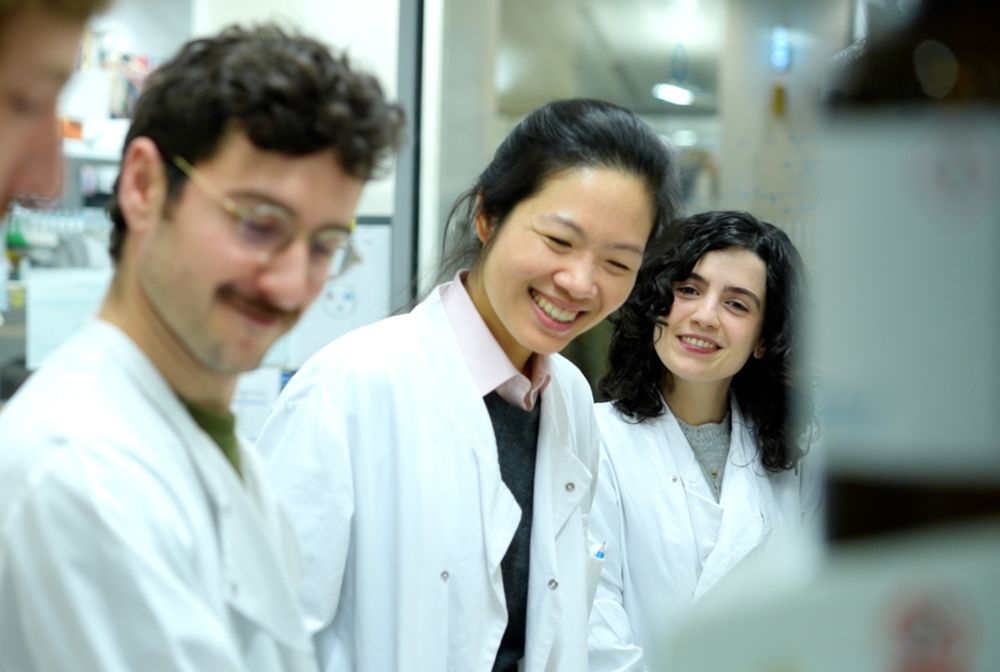
@titus.idyll.org lab (@taylorreiter.bsky.social), both at UC Davis. Asking the question: what are we missing in short-read metagenome assembly, and why ?
doi.org/10.1093/narg...

@titus.idyll.org lab (@taylorreiter.bsky.social), both at UC Davis. Asking the question: what are we missing in short-read metagenome assembly, and why ?
doi.org/10.1093/narg...


www.science.org/doi/10.1126/...
A collaboration with @innovativegenomics.bsky.social
Congrats to the Banfield lab, @roeleah.bsky.social , @nxhamlish.bsky.social , and Alanna!
#NSFfunded

www.science.org/doi/10.1126/...
A collaboration with @innovativegenomics.bsky.social
Congrats to the Banfield lab, @roeleah.bsky.social , @nxhamlish.bsky.social , and Alanna!
#NSFfunded
www.science.org/doi/10.1126/...

www.science.org/doi/10.1126/...

doi.org/10.1038/s415...
@benjwoodcroft.bsky.social @rhysnewell.bsky.social
🧵1/6

doi.org/10.1038/s415...
@benjwoodcroft.bsky.social @rhysnewell.bsky.social
🧵1/6
Thanks to David and Tues hard work, we now have a new tool to recover them!
A pleasure to be part of a team. :)
🦠🧪💻 #microsky

Thanks to David and Tues hard work, we now have a new tool to recover them!
A pleasure to be part of a team. :)
🦠🧪💻 #microsky

www.biorxiv.org/content/10.1...
Want to get started? github.com/rickbeeloo/b...
www.biorxiv.org/content/10.1...
Want to get started? github.com/rickbeeloo/b...
Unix head, but FASTQ-aware 🧬
✅ Get first N reads (not just lines!)
✅ Works with paired-end reads
✅ Can limit by bases OR reads
✅ Blazingly fast (it's Rust 🦀)
cat huge.fq | fasten_head -r 1000
Stop doing math with -n. Let the tool understand your data.
Unix head, but FASTQ-aware 🧬
✅ Get first N reads (not just lines!)
✅ Works with paired-end reads
✅ Can limit by bases OR reads
✅ Blazingly fast (it's Rust 🦀)
cat huge.fq | fasten_head -r 1000
Stop doing math with -n. Let the tool understand your data.




...and no, the image doesn't show reconstituted 𝘒𝘪𝘵𝘢𝘴𝘢𝘵𝘰𝘴𝘱𝘰𝘳𝘢 telomeres (telomores) 😉
#MicroSky

...and no, the image doesn't show reconstituted 𝘒𝘪𝘵𝘢𝘴𝘢𝘵𝘰𝘴𝘱𝘰𝘳𝘢 telomeres (telomores) 😉
#MicroSky

- Lab set-up, research costs, salaries for up to 5 researchers
- Support for up to 12 years
- Access to our core facilities
- Competitive salary
- Fantastic colleagues
- All areas of biology
Deadline 27 Nov
www.crick.ac.uk/careers-stud...

- Lab set-up, research costs, salaries for up to 5 researchers
- Support for up to 12 years
- Access to our core facilities
- Competitive salary
- Fantastic colleagues
- All areas of biology
Deadline 27 Nov
www.crick.ac.uk/careers-stud...
To further improve the functional annotation of "hypothetical" CDS, me and @gbouras13.bsky.social, we are looking for the worst Bakta-annotated bacterial genomes ;-)
(1/2)
To further improve the functional annotation of "hypothetical" CDS, me and @gbouras13.bsky.social, we are looking for the worst Bakta-annotated bacterial genomes ;-)
(1/2)
We’re inviting applications from outstanding researchers who either hold, or wish to apply for, Independent Research Fellowships.
APPLICATION DEADLINE: 10 November 2025
Click here to apply: jic.link/Fellows

We’re inviting applications from outstanding researchers who either hold, or wish to apply for, Independent Research Fellowships.
APPLICATION DEADLINE: 10 November 2025
Click here to apply: jic.link/Fellows

Thread 1/n

Thread 1/n
www.biorxiv.org/content/10.1...
#Bioinformatics #genomics #assembly #assemblygraphs #software



